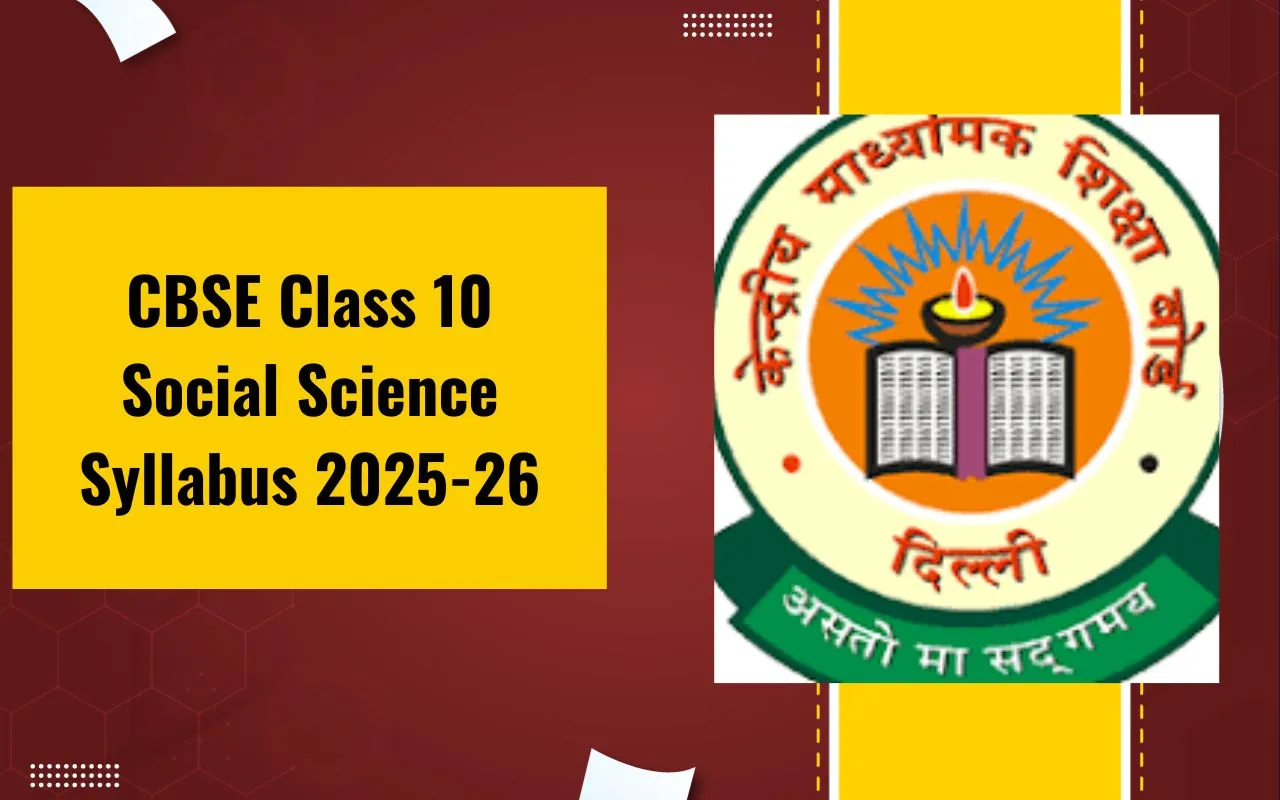
CBSE Class 10 Social Science Economics Notes Chapter 3: In Chapter 3 of CBSE Class 10 Social Science Economics Notes, called "Money and Credit," students learn about two important things: money and credit. They start by understanding what money is and its different forms, like coins and bank deposits.
They also learn how banks are connected to money and how they help create and manage it. They learn about where people can get credit from, like banks or from friends, and what it means for them. Students also learn about the good and bad sides of borrowing money. Overall, this chapter helps students understand how money and borrowing work, and how they're important in the economy.CBSE Class 10 Social Science Economics Notes
Topics Covered in the CBSE Class 10 Social Science Economics Notes Chapter 3 Money and Credit Overview
In the CBSE Class 10 Social Science Economics Notes Chapter 3 - Money and Credit Overview, students will cover the following topics:Introduction to Money
- Understanding the different forms of money, such as coins, notes, and bank deposits.
- Learning about the functions of money, like being a medium of exchange and a store of value.
Role of Banks in Money Circulation :
- Understanding the importance of banks in the modern financial system.
CBSE Class 10 Social Science Economics Notes Chapter 1
Concept of Credit :
- Introducing the concept of credit and its significance in economic activities.
- Learning how credit enables borrowing and lending for various purposes.
Types of Credit Sources :
- Differentiating between formal and informal sources of credit, such as banks and moneylenders.
- Understanding the advantages and disadvantages of each type of credit source.
Impact of Credit on Borrowers :
- Understanding the benefits and risks associated with borrowing money.
Terms and Conditions of Credit
- Learning about the terms and conditions associated with credit, including interest rates, collateral, and repayment schedules.
- Understanding the importance of responsible borrowing.
CBSE Class 10 Social Science Economics Notes Chapter 2
CBSE Class 10 Social Science Economics Notes Chapter 3 Development PDF
You can access the CBSE Class 10 Social Science Economics Notes for Chapter 3 in PDF format through the following link:CBSE Class 10 Social Science Economics Notes Chapter 3 PDF
CBSE Notes Class 10 Economics Chapter 3 – Money and Credit
Money as a Medium of Exchange
Money provides as a medium of exchange, facilitating the buying and selling of goods and services in an economy. It eliminates the need for barter, where goods are exchanged directly for other goods, by providing a universally accepted medium for transactions. As a medium of exchange, money offers several advantages:Facilitates Transactions : Money simplifies transactions by providing a common unit of value that both parties agree upon. This makes trading more efficient and reduces the time and effort required to find suitable trading partners.
Enhances Specialization : With money, individuals can specialize in producing certain goods or services without needing to find someone who wants to trade directly for what they produce. This specialization leads to increased productivity and economic growth.
Promotes Economic Growth : By facilitating trade, money encourages economic activity and stimulates the production and consumption of goods and services. This, in turn, contributes to overall economic growth and development.
Increases Convenience : Money is convenient to carry and store compared to bulky goods. It also allows for transactions to occur at any time and place, increasing convenience for both buyers and sellers.
Reduces Transaction Costs : Money reduces the transaction costs associated with barter, such as the time and effort required to negotiate the terms of trade and the inconvenience of finding suitable trading partners.
| CBSE Class 10 Economics Notes |
| Chapter 1: Development |
| Chapter 2: Sectors of the Indian Economy |
| Chapter 3: Money and Credit |
| Chapter 4: Globalisation and the Indian Economy |
| Chapter 5: Consumer Rights |
Modern Forms of Money
Modern forms of money have evolved beyond physical currency to include various digital and electronic forms. Here are some examples:Cash : Physical currency, such as banknotes and coins remains a widely used form of money for small transactions and in regions where digital payment infrastructure is less developed.
Bank Deposits : Money held in bank accounts, including checking accounts, savings accounts, and certificates of deposit (CDs), is a common form of money. Bank deposits are often accessed through debit cards, checks, or electronic transfers.
Credit Cards : Credit cards allow users to borrow money from a financial institution up to a certain credit limit to make purchases. Users repay the borrowed amount, along with any interest or fees, at a later date.
Debit Cards : Debit cards are linked to a user's bank account and allow for electronic transactions, deducting the purchase amount directly from the account balance. Unlike credit cards, debit cards do not involve borrowing money.
Mobile Payment Apps : With the proliferation of smartphones, mobile payment apps have become increasingly popular. These apps allow users to transfer money, make purchases, and pay bills using their mobile devices. Examples include PayPal, Venmo, and Cash App.
Digital Wallets : Digital wallets store payment information securely and allow users to make contactless payments using near-field communication (NFC) technology. Examples include Apple Pay, Google Pay, and Samsung Pay.
Cryptocurrencies : Cryptocurrencies, such as Bitcoin, Ethereum, and Litecoin, are digital or virtual currencies that use cryptography for security and operate on decentralized networks based on blockchain technology. They offer the advantage of borderless transactions and decentralized control but can be volatile in value.
Electronic Funds Transfer (EFT) : EFT allows for the electronic transfer of funds between bank accounts, often used for large transactions, payroll deposits, and bill payments.
Read More - Tips to Score 95% in Social Science Class 10 Board Exams
Currency
- The RBI is responsible for issuing currency notes on behalf of the central government.
- The Indian rupee is widely accepted as a medium of exchange in India, facilitating transactions across the country.
Deposits in Banks
- People also hold money in banks in the form of deposits.
- Banks accept these deposits and pay interest on them. People can withdraw their deposits as needed, typically using cheques for transactions.
Loan Activities of Banks
- Banks use the deposits they receive to provide loans to individuals and businesses.
- They charge a higher interest rate on loans than the interest they pay on deposits, generating income for the bank.
Two Different Credit Situations
- Credit refers to the borrowing of money, goods, or services with the promise of repayment in the future.
- Examples of credit situations include borrowing money to invest in a business (beneficial) or struggling to repay a loan due to crop failure (harmful).
Terms of Credit
- Every loan agreement specifies terms such as interest rates, collateral (security), and repayment schedules.
- These terms, collectively known as the terms of credit, determine the conditions under which the loan is granted and repaid.
Formal Sector Credit in India
Formal sector credit in India refers to the credit provided by regulated financial institutions, such as banks and non-banking financial companies (NBFCs), which operate under the supervision of the Reserve Bank of India (RBI) and other regulatory authorities. Here are some important aspects of formal sector credit in India:Bank Credit : Commercial banks are the primary source of formal sector credit in India. They provide loans and advances to individuals, businesses, and government entities. Bank credit includes various types of loans, such as personal loans, home loans, vehicle loans, business loans, and agricultural loans.
Non-Banking Financial Companies (NBFCs) : NBFCs are financial institutions that offer banking services without meeting the legal definition of a bank. They provide credit through loans, leases, hire purchase, and other financial products. NBFCs play a significant role in providing credit to small and medium-sized enterprises (SMEs), microfinance borrowers, and individuals who may not have access to traditional banking services.
Priority Sector Lending : In India, banks are required to allocate a certain percentage of their total lending to specified priority sectors, such as agriculture, small-scale industries, micro-enterprises, education, housing, and renewable energy. This policy aims to ensure that credit is directed towards sectors that contribute to economic development and social welfare.
Regulatory Framework : The RBI regulates formal sector credit in India through various guidelines, policies, and regulations. It sets prudential norms, interest rate caps, and other guidelines to ensure the stability and soundness of the financial system. Additionally, credit information bureaus, such as Credit Information Bureau (India) Limited (CIBIL), collect and maintain credit information on borrowers, which helps lenders assess creditworthiness and manage risks.
Government Initiatives : The Indian government implements various schemes and initiatives to promote financial inclusion and increase access to formal sector credit, especially among underserved and marginalized populations. These initiatives include the Pradhan Mantri Jan Dhan Yojana (PMJDY), Mudra Yojana, Stand-Up India, and various rural credit programs.
Formal and Informal Credit
- While formal sector loans provide cheaper credit, informal sector loans are more easily accessible, particularly in rural areas.
- Efforts are underway to increase the availability of formal sector credit, especially to marginalized communities.
Self Help Groups for the Poor
- Self Help Groups (SHGs) are small groups of individuals who pool their savings and provide loans to group members.
- SHGs empower members, particularly women, by providing access to credit and promoting financial independence.
Related Links
CBSE Class 10 Social Science Economics Notes Chapter 3 FAQs
What is the role of money in the economy?
How are modern forms of money linked to the banking system?
What is credit, and why is it important?
What are the sources of credit?










